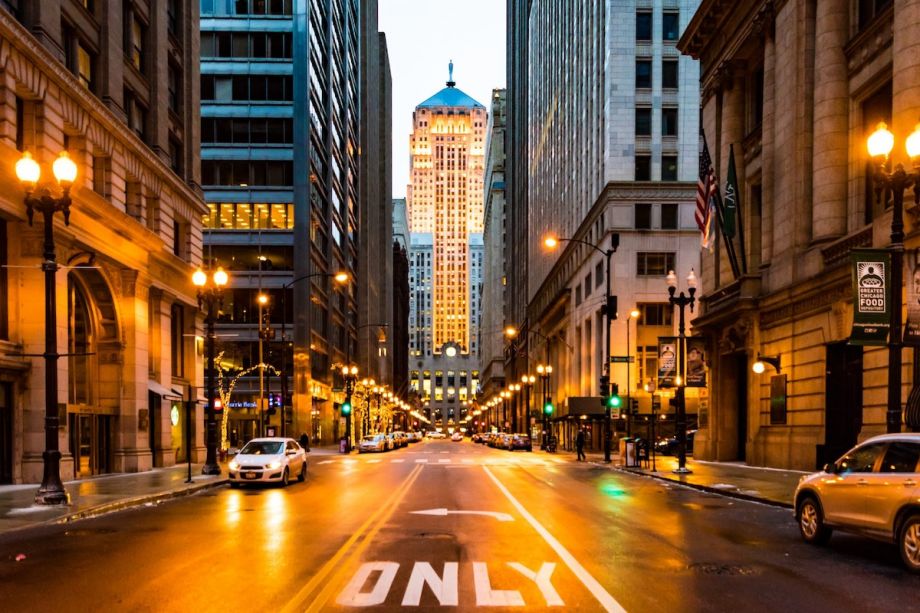Turns out, wider lanes don’t make for safer streets. In a new study from the Johns Hopkins Bloomberg School of Public Health, a team of researchers found that the opposite is actually true: Narrowing lanes at certain speeds could save lives.
The study came from a simple observation, says lead researcher Shima Hamidi, a transportation planner and Hopkins assistant professor of American health. She noticed that the traffic lanes in U.S. cities were much wider than their counterparts in other countries.
Without existing data, traffic engineers assumed that wider lanes — which left more room for driver error — would be safer.
But that’s not true, says Hamidi. In a study of over 1100 streets in seven cities that included 22 design variables, wider lanes were not safer.
“When you compare 12-foot lanes versus 9- or 10-[foot lanes], in many cases, they’re actually more dangerous,” she says.
At a speed class of 30-35 mph, wider lanes saw more crashes. Researchers posit that drivers speed up and pay less attention to the road when lanes are wider. The implications are huge: What if cities could make streets safer simply by narrowing lanes?
The study comes at a crisis point for pedestrian safety in the U.S. According to the Governors Highway Safety Association, last year over 7,500 pedestrians were killed by drivers, the highest number of fatalities in 41 years and a 77% increase from 2010. As cities struggle to stem the tide of traffic violence, reducing lane width could be a deceptively simple solution.
For decades, lane width standards have been set by the American Association of State Highway and Transportation Officials (AASHTO) in something called the “Green Book.”
“Right now, the mindset of street design is in most cases to start with 11 or 12-foot [lanes] and have traffic engineers justify if it needs to be narrower,” says Hamidi.
Instead, researchers want to shift the paradigm: Traffic engineers should start with 9- or 10-foot lanes and justify why lanes should be wider.
The real goal: add bike lanes and widen sidewalks
Not all streets are suitable candidates for lane narrowing interventions. Roads that carry buses or trucks and have higher speed limits require wider lanes. The study recommends targeting streets with less traffic and a speed limit of 20-35 mph. In addition, it recommends streets with a low degree of curvature, fewer lanes, no raised median and not a lot of on-street parking — all factors that cause drivers to slow down.
The key is not just narrowing lanes. It’s adding infrastructure for walking and biking through a lane repurposing program. Normally, Hamidi explains, widening sidewalks or adding a bike lane would require increasing the amount of impervious surface in a city — in other words, pouring more concrete or asphalt.
Narrowing lanes could free up space for more bike lanes and wider sidewalks.
“When you compare different alternatives, the cheapest and most cost-efficient way to add bike lanes and sidewalks to the existing transportation infrastructure is through lane width reduction,” says Hamidi. The study estimates such lane repurposing projects could cost roughly $5,000 to $30,000 per mile.
Researchers believe that narrowing lanes could also have positive economic benefits, increasing property values for residents by making streets more walkable and bikeable.
For her next study, Hamidi and her team are looking beyond safety to some of the other potential positive impacts of lane-width reduction.
“We hope to be able to talk more broadly — not only in terms of safety — but a broader set of benefits… which might help with making the case with the community and policymakers on why it is important.”
Will cities embrace narrow lanes?
Lane width reduction is not a one-size-fits-all strategy. Rather the study recommends something similar to California’s “complete streets” approach that designs roads so that all users can travel safely.
Hamidi says the most promising interest is at the city level, although some state DOTs, including California and Florida, are showing interest.
Fighting decades of wider-is-better thinking might be tough. So far, Hamidi has not received any negative feedback on the study. But given the struggle cities face to add bike lanes and bus lanes — and a history of designing streets that prioritize speed for drivers over safety for all road users — could narrowing lanes be an uphill battle?
In the past, Vermont was one of the first states to put narrower lanes on the books, setting 9-foot lanes as the recommended minimum. However, that standard was never actually implemented, partially due to concerns about liability. But now, Hamidi says, there’s data to back it up.
And if narrowing lanes seems like a tough sell, she points out that drivers should be on board too.
“This lane-width reduction more than anyone will benefit drivers, because if the street is unsafe — almost any crash that you think of, there is a driver that’s involved.”
This story was produced through our Equitable Cities Fellowship for Social Impact Design, which is made possible with funding from the National Endowment for the Arts.

Maylin Tu is Next City's Equitable Cities Reporting Fellow for Social Impact Design. A freelance reporter based in Los Angeles, she writes about transportation and public infrastructure (especially bus shelters and bathrooms), with bylines in the Guardian, KCET, Next City, LAist, LA Public Press and JoySauce. She graduated with a BA in English from William Jewell College in Missouri.
Follow Maylin .(JavaScript must be enabled to view this email address)








